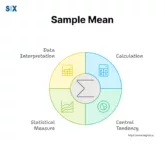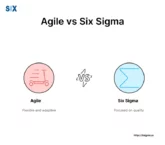Sample Mean: A Comprehensive Guide to Understanding, Calculating, and Applying Statistical Averages
Imagine slashing defect rates by 70% or boosting customer satisfaction by 40% – all by mastering one simple statistical concept, which is sample mean. Sample mean proves to be a powerful tool for unlocking data-driven decision-making and process improvement. What is Sample Mean? Sample mean is the average of a set of numbers taken from […]



























